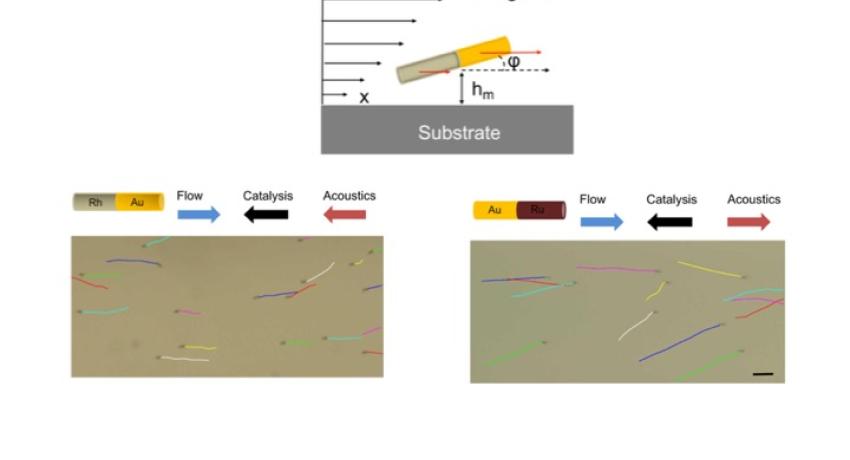Penn State MRSEC DMR-1420620: Liqiang Ren, Dekai Zhou, ZhangmingMao, Pengtao Xu, Tony Jun Huang, and Thomas E. Mallouk*
The H2O2 powered bimetallic micromotors can respond to shear flow and exhibit rheotactic behavior. When a negative charged surface is presented, the bimetallic nanorod interacts with the surface through the local electric field induced by asymmetric decomposition of H2O2, resulting in a tilted angle between the nanorod and the surface. Consequently, the tilted nanorod experiences a shear force and aligns itself against the flow. By choosing proper combination of bimetallic nanorods, acoustic wave can accelerate or reverse the motion of catalytic micromotors. Combining the acoustic regulation with catalytic propulsion, both positive rheotaxis (Rh-Au) and negative rheotaxis (Au-Ru) have been demonstrated. This phenomenon can play a significant role in targeted cargo delivery.
ACS Nano 2017, 11, 10, 10591-10598
Credits/Names: Penn State MRSEC DMR-1420620: Liqiang Ren, Dekai Zhou, ZhangmingMao, Pengtao Xu, Tony Jun Huang, and Thomas E. Mallouk*
Download PDF Version: IRG2_Rheotaxis highlight for annual report.pdf
Year of Highlight: 2019
IRG: IRG2 - Nanomotors


